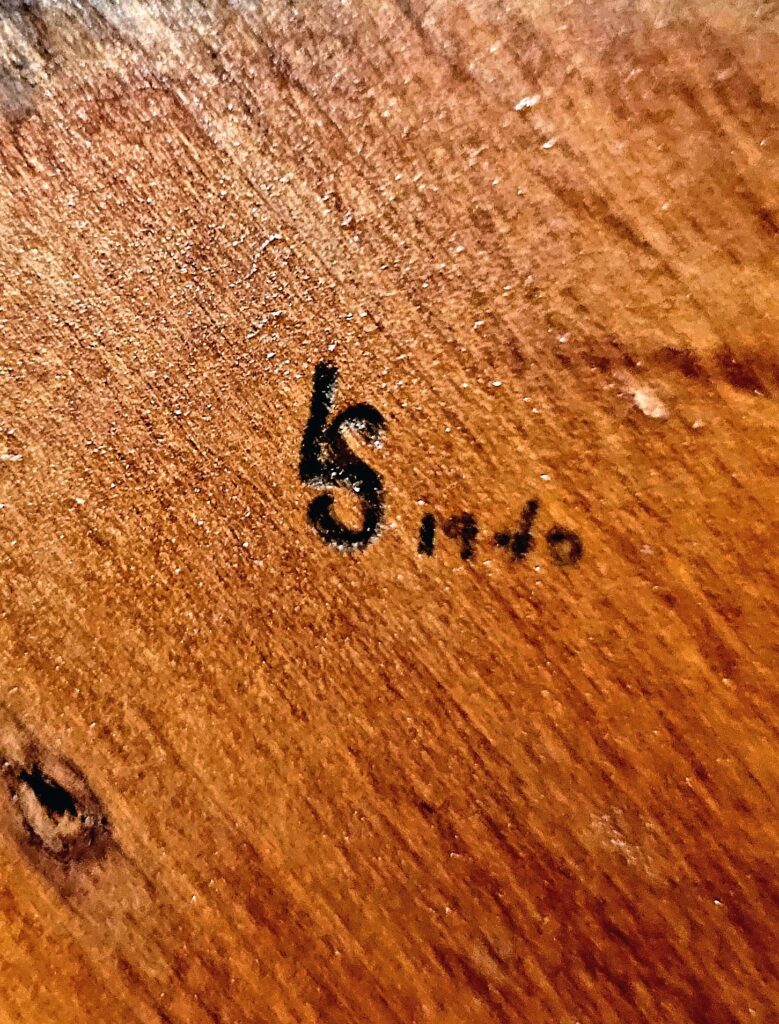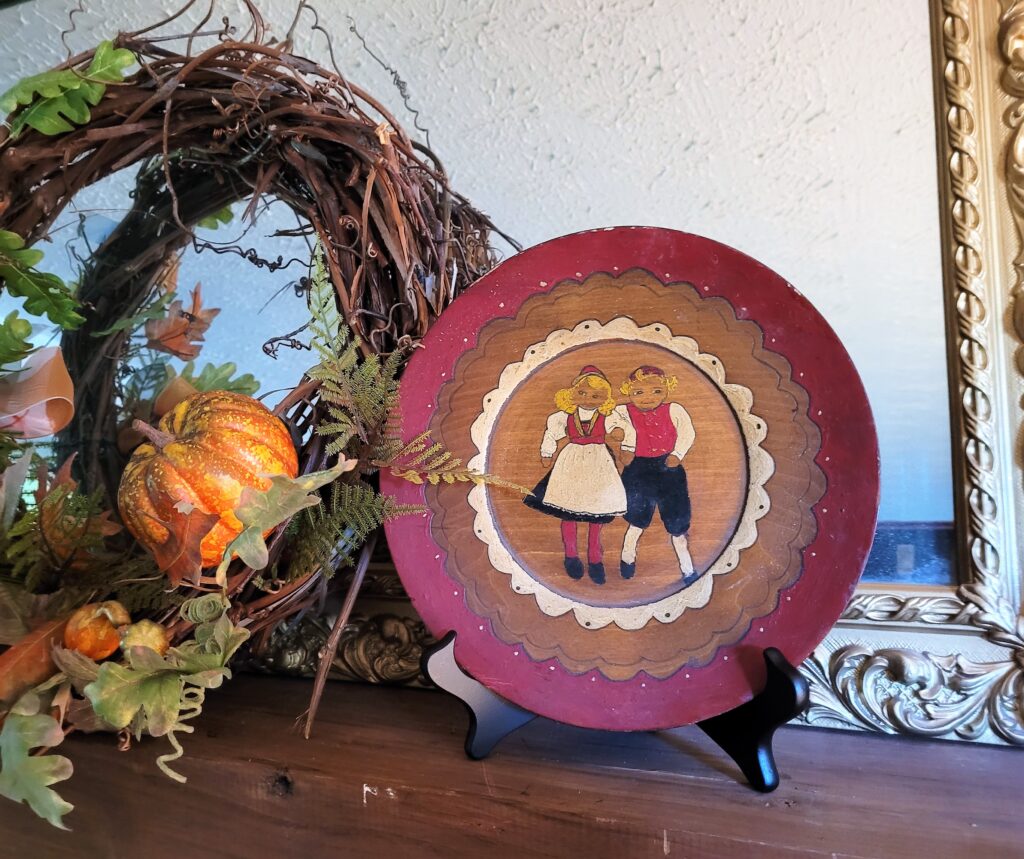I thought I would blog about this wooden painted folk art plate, c. 1940, I recently found in a second hand store.
Description of Wooden Folk Art Plate
When I first looked at this wooden folk art plate, it was dusty and old looking. The art work looks rather amateurish but, also, cute in its own way. The children painted on the dish have light blond hair and large eyes. But, unfortunately, I have not been able to tell what country the dress style is from.
I initially thought German because of the blond hair, but the boy probably would be wearing Lederhosen not knickers.
The plate is made out of light weight wood, probably pine. It shows a girl and a boy standing together in some type of classic European dress costume.
The girl wears a red and white hat, a puffy-long sleeve white blouse, red vest and full black skirt. Over her skirt she wears a half white apron. Her socks are red and she wears black shoes.
The boy wears a cap, a white long-sleeve shirt, red double-breasted button up vest, black knickers, white socks and black shoes. His one foot is almost out of the design.

Front of the folk art dish shows a girl and a boy in what appears to be in European dress costumes.

Back of the Wooden Folk Art Plate shows the initials, “LS 1940”.
The edge of the wooden plate is painted red with white dots. There is also a ring of white paint around the couple with black dots.
Some of the wood looks like it was pressed with a sharp edge to make a decorative ring which is not painted.
Knickers or Pants?
It makes sense the European looking boy is wearing knickers. In Europe, boys wore knickers in the 1940’s until up to World War II. It was also common to wear black knee high socks with those knickers.
In America, boys generally wore long pants.

Ending Notes
I am researching how to clean this unusual plate. The last thing I want to do is to clean the design off the plate.
I remember back to my efforts to clean a grimy religious statue. I used some dish detergent, water and a soft cloth. But all of a sudden, I realized I had “erased” the statue’s eye brows away. What to do to fix this? The figure looked shocking without the eye brows, so I picked up a lead pencil and carefully drew a thin brow line above the eyes. This worked and I was so glad, since I had to return the statue the following week. At least it was clean looking.
For now, I purchased a black wooden plate holder and dusted the plate. The vintage dish sits on my fireplace mantel with a large mirror in the background.
If I find anymore information on it, I’ll be sure to give my Readers an update.
Research Sites: histoclo.com

